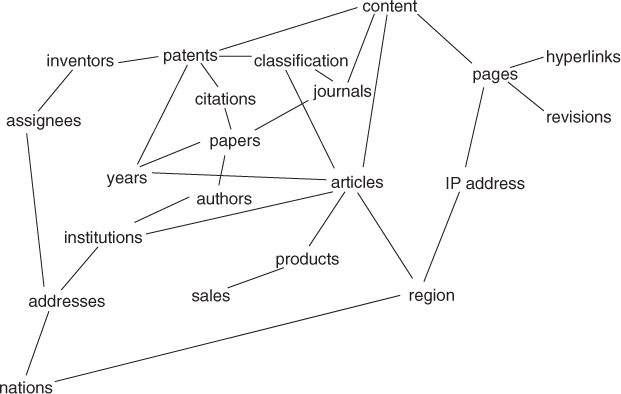5.5 Using Search Results
Results of increasing complexity can be derived from search results. These include:
- Lists—the “top 10” organizations patenting the technology
- Matrices—the distribution of technology patents on the technology by year
- Maps—social network of researchers within an organization
- Profiles—top researchers to provide selected fields of information
Depending on the type of search information retrieved and the forecast focus and intent, many different uses can be made of the results. For instance, a rich network of relationships found in a single scientific article may provide the names of the authors, the year of publication, the journal, a content classification and keywords, actual content, institutional names and addresses, and associated nations. Similarly complex relations can be extracted from patents or web pages (Figure 5.3). Experts can provide complex chains of data as well.
Figure 5.3. Relationships in the Data

These networks can be used to construct elaborate chains and relationships. For instance, one could try to:
- Determine which nations are pursuing which fields of knowledge (e.g., Youtie, Shapira, et al. 2008)
- Identify authoritative web pages based on hyperlink patterns—this is what Google does
- Identify high-quality science through citation patterns (Porter and Youtie 2009)
- Evaluate the interdisciplinary character of teams and individuals (Porter, ...
Get Forecasting and Management of Technology, Second Edition now with the O’Reilly learning platform.
O’Reilly members experience books, live events, courses curated by job role, and more from O’Reilly and nearly 200 top publishers.

